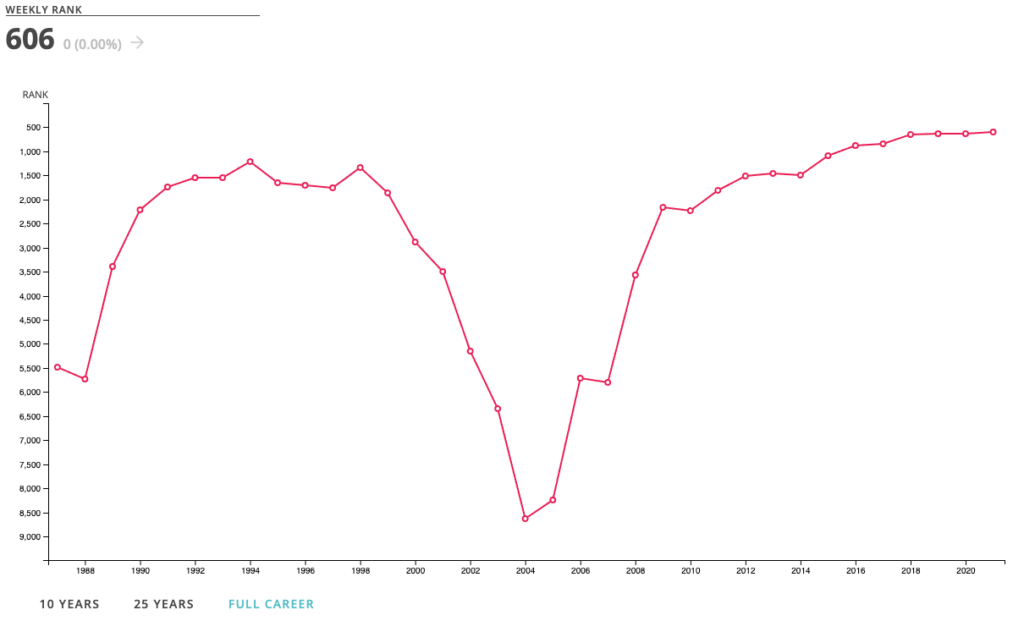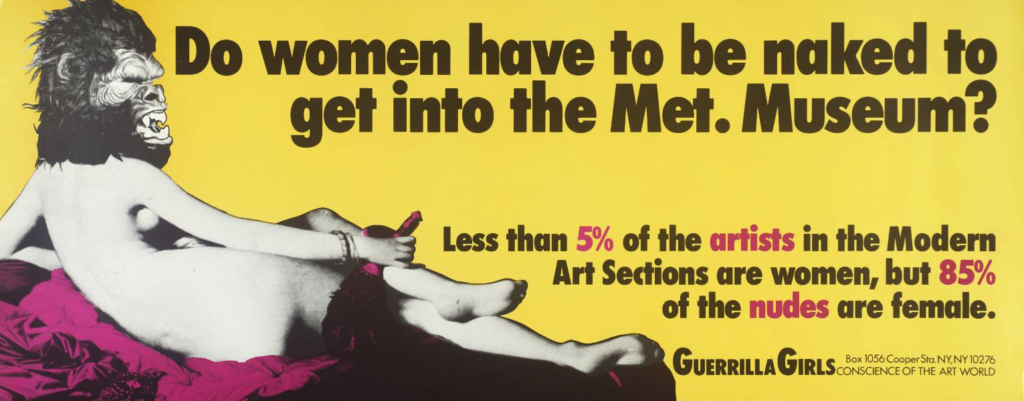
In honor of International Women’s day, we are bringing you two diverse female artists and one collective known for either their activism, or for their celebration of femininity and exploration of gender stereotypes. We shall say no more, and let the stories of the artists speak for themselves.
Barbara Kruger
Ranked 67 in the US and 238 Globally.

“Of course I am a feminist, but I have never been able to consider gender or sexuality apart from class, and never thought of class apart from race.”
Her works, made using photolithography and screenprinting techniques, which have been posted on billboards, buses, walls, skate parks, and in museums, are recognised around the world. Her use of bold font and catchy statements pasted over black and white photographs have ironically inspired a plethora of brands, to use the very approach she employed to criticise the consumerist systems which they contribute to.
Her use of direct address, which has been the motor of her practice from the beginning combined with her commercial style, stemming from a career that began at Condé Nast publications, is used to explore gender, identity power and consumerism, and contributed to her success at reaching a broader audience.

Two of her most well known works I Shop Therefore I Am (1987) and Untitled (Your Body Is A Battleground) (1989) perfectly exemplify her beliefs and her approach. The former was used as a poster personally pasted around the city by Kruger to advertise a Women’s Rights, Pro-Choice March in ‘89.
The Guerrilla Girls
Ranked 163 in the US and 606 Globally

“Artists are at the forefront of resistance”
Following Kruger’s work, it’s easy to see stark similarities with The Guerrilla Girls- bold font, bold statements, and cut and paste images, plastered around cities- and for all we know, she may very well be one of them.
As a group that dons gorilla masks which shield their identity, after over 30 years, we still don’t know who they really are. This masking freed them of the possible repercussions on their individual careers, which empowered and liberated them to speak truths about gross inequalities, first in the art world and later on a broader political front.

The Guerrilla Girls take it one step further than Kruger though, by placing specific facts in their work, and it is the use of facts that really cemented their practice, and career. One of their most famous works Do Women Have To Be Naked To Get Into the Met. Museum? (1989) helped to garner international recognition, unfortunately after so much time, their original data listed has not changed that much.
Their works have moved from being on the street, to in, or on, museums as well and just last year their work was featured alongside Krugers in a group exhibition Some Day is Now: Women, Art & Social Change at the New Britain Museum of American Art.
Billie Zangewa
Ranked 1 in Malawi, and 2308 Globally

“I’m reclaiming my identity, my feminine power, and my significance in society at large.”
With an entirely different approach to feminism than either Guerrilla Girls or Barbara Kruger, Zangewa focuses on the personal story, celebrating motherhood and domestic life, or ‘daily feminism’ where the unseen activities women do at home are recognised and honored.

Zangewa works with raw silk cut-offs (used for it’s representation of transformation) to sew together her stunning tapestries, some of the works with tears, rips or in incomplete shapes, which only adds to their meaning and beauty. Her work is currently featured in a group show ‘The Power of My Hands’ at the Musée d’Art Moderne de la Ville de Paris which is on until the end of May- see it if you can.
The works of these women represent just a few or the myriad of ways art can be used as empowerment, and prove just how successful feminist art can be.
Barbara Kruger and The Guerrilla Girls helped shape a generation and their work is just as, if not more prevalent today than ever, still exhibiting extensively, whilst informing and provoking needed reflection and henceforth, change, around the world. Perhaps Billie Zangewa’s art can be used to inform another generation, and insight positive change in another continent, where a majority of the countries within it are still struggling to gain even some of the rights so hard-won by generations before in other parts of the world.
Keep exploring and supporting the art, and voices of women.
Let’s make history happen.
The Artfacts Team
